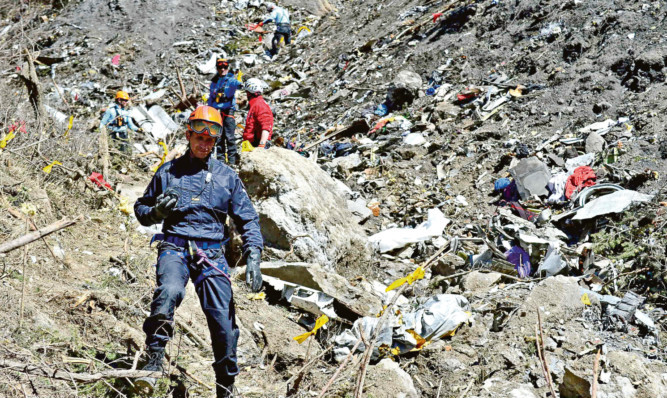
Stressed pilots warned air chiefs about a possible rise in cockpit suicides a month before the Germanwings disaster, The Sunday Post can reveal.
More than 6,600 captains and first officers from across Europe were quizzed on their working conditions. And the damning dossier went on to lay bare “abysmal” working conditions and claims many stressed pilots were becoming “ticking time-bombs”.
The European Commission-funded study, which included more than 660 Britons in its questioning, insisted that financial pressures, a lack of job security and excessive working hours were leaving many airmen and women depressed.
One pilot confirmed colleagues were becoming suicidal over stressful working conditions.
The study also uncovered grave concerns about cost-cutting taking precedence over safety regulations and revealed that one in every five commercial pilots flying in Europe work on pay-to-fly, agency or self-employment terms casting real doubt on the quality and extensiveness of mental health assessments performed on pilots.
Prof Peter Turnbull was one of the experts who helped compile the “Atypical Employment in Aviation” report.
He said: “All these pilots tell you that they still go to work when they know they shouldn’t be flying. This spike in stress is caused by a combination of factors. The financial situation of being in around £100,000 of debt before you even start working, the pressure to keep working and the intensity of the work.
“Atypical, precarious contracts add to that too. It’s a new form of slavery.”
Germanwings co-pilot Andreas Lubitz, 27, killed 144 passengers, his pilot and four cabin crew when he flew his Airbus A320 aircraft into the French Alps last month.
The investigation into the crash found a letter in his apartment which indicated he had been declared “unfit to work” by a doctor an illness he was hiding from his employers.
February’s report insisted European pilots were being expected to perform “beyond what is reasonable”, in an environment that made them reluctant “to declare unfitness to work”.
The study put this down to new atypical forms of employment anything other than an open-ended contract which could see them lose out on work if they were found to be unreliable.
In quoted responses, it was reported that the stresses put on pilots by this type of work were “a disgrace”, with one pilot saying: “People are committing suicide because of this outrageous way they are being treated.”
Prof Turnbull has 25 years’ experience studying the industry.
Asked if this was the worst time in history to be a pilot, he said: “Yes. When this report was published, the main discussion around it was what it would take for the industry to take notice. Everyone said a crash. Big changes have to be made.”
A spokesman for the British Airline Pilots Association confirmed pilots’ working conditions were a concern.
He said: “Insecure forms of employment, such as zero-hours contracts, have been a major concern for pilots for some time.
“However, the Germanwings accident is still under investigation and there is no evidence at this stage that employment conditions were a factor in that tragedy.”

Enjoy the convenience of having The Sunday Post delivered as a digital ePaper straight to your smartphone, tablet or computer.
Subscribe for only £5.49 a month and enjoy all the benefits of the printed paper as a digital replica.
Subscribe